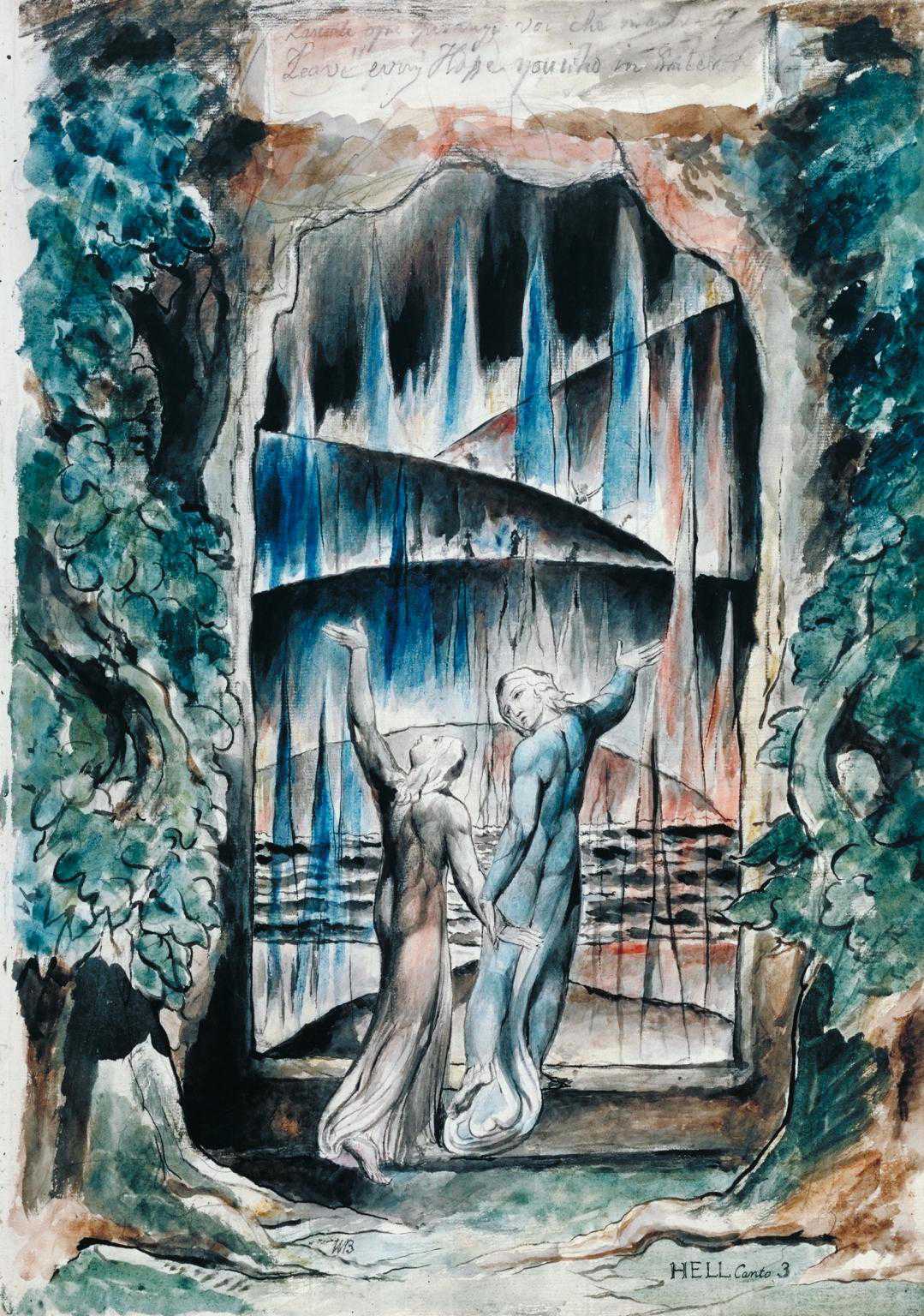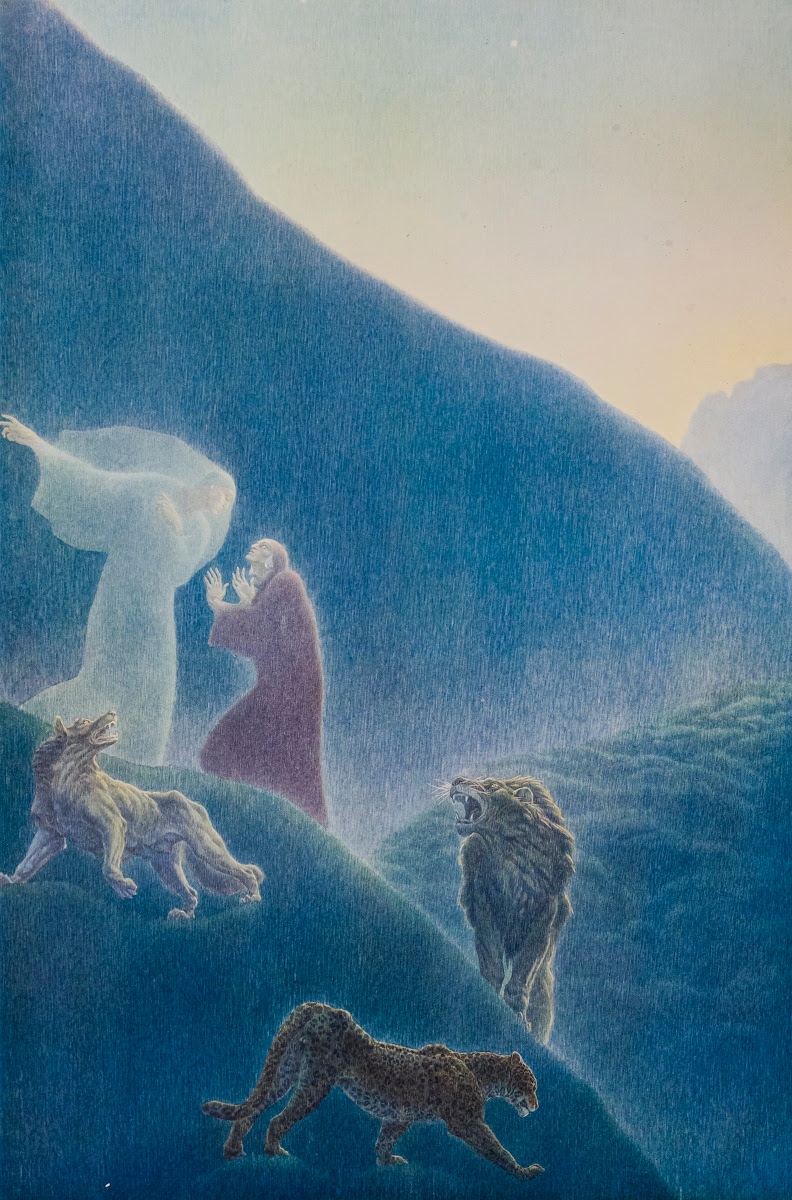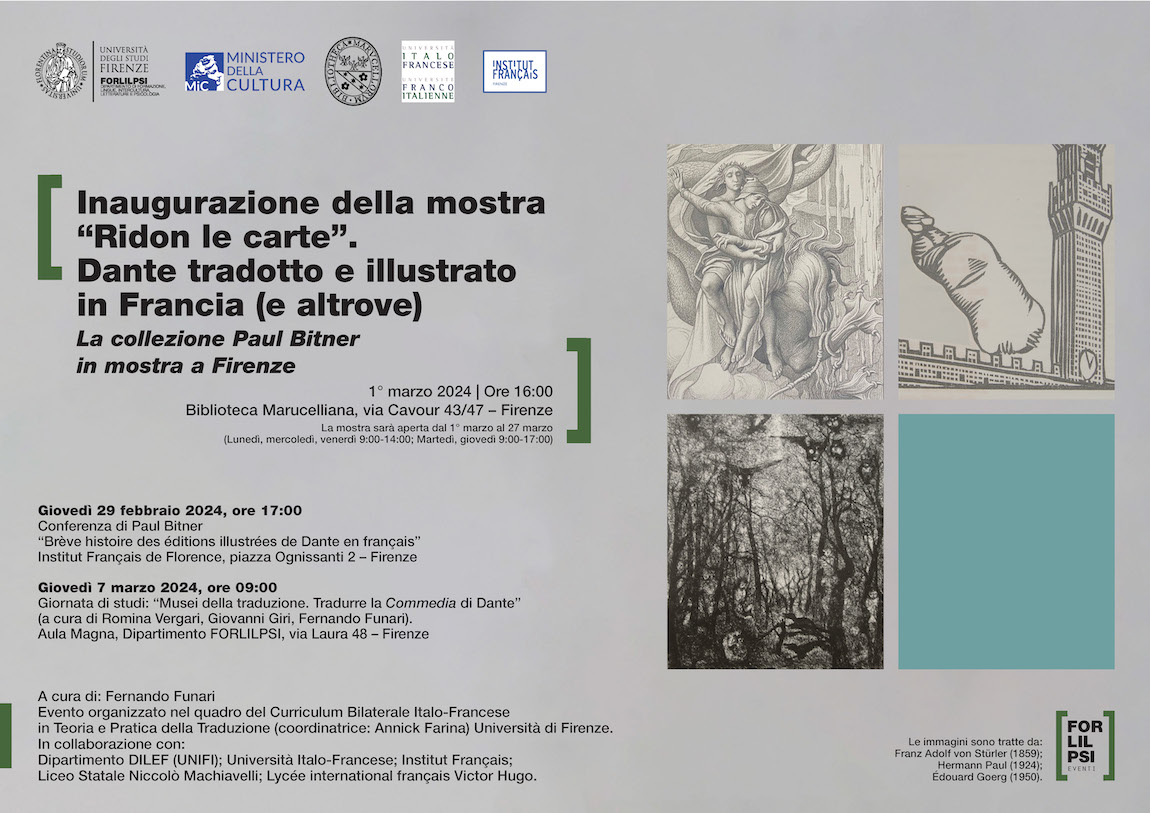“Many artists have interpreted Dante’s afterlife by letting themselves be inspired by the culture and fears of their time. Amos Nattini, between 1915 and 1939, undertakes this great project with passion and dedication, giving us an absolutely human and realistic version of it. His lithographs were published together with the Divine Comedy text in three volumes. The edition of the Cariparma Foundation is dated 1939.” — “Amos Nattini and The Divine Comedy,” Google Arts and Culture, 1900s (Retrieved March 28, 2024).
Paul Laffoley’s Dantean Triptych (1972-1975)
“Paul Laffoley’s extraordinary triptych of Dante’s Comedy brings Dante’s ‘altro dove’ (literally, ‘other where’) into a remarkably comprehensive and vivid translation. In the history of illustrations of the Comedy, there is nothing like it. Laffoley is the only artist, as far as I know, to have depicted all one hundred cantos and the topography of Hell, Purgatory, and Paradise, in the same piece.
“With the classical, religious, mathematical, esoteric, and cosmo-logical themes present in Laffoley’s opus, Dante’s Comedy was a natural text for him to turn his attention. The Divine Comedy triptych, 1972-75 (plates 29, 30, and 31), indubitably bares his trademarks of architectonic precision, mind-boggling detail, immense erudition, symmetry, balance, and the word-techniques that lend themselves to an illustration of something as vast, multidimensional, intricate, and based in language and interpretation as Dante’s Comedy.” — Arielle Saiber, “Laffoley and Dante’s Other Worlds,” in The Essential Paul Laffoley, ed. Doug Walla (2016), 23-29.
The Divine Comedy Illustrated by Mimmo Paladino (2021)
“Sergio Risaliti, director of the Museo Novecento in Florence and curator of the contemporary art section at the Museo e Real Bosco di Capodimonte in Naples, has seized on the importance of the anniversary to devise an ambitious project: a special edition of The Divine Comedy illustrated by artist Mimmo Paladino. The volume, published by Forma Edizioni, is enriched with essays by Cristina Acidini and Giorgio Bacci, as well as boasting the collaboration of Riccardo Bruscagli, an expert on Dante and professor emeritus of Italian literature at the University of Florence.
[…]
“How do the images connect with the words? What do they want to give back to the reader?
“Dante is a plastic and figurative poet; we could call him, today, a contemporary film director. In the Divine Comedy there are very powerful images that return a strong visual impact. We think of Paolo and Francesca, so overwhelmed by their love, embraced and entwined allinfinity, here Dante was writing making images alive. Paladino, taking his cue from Dante’s immense figurative repertoire, brings with his illustrations other solicitations, going beyond the limit of words and adding his portion of space and meaning.” — Antonio Mirabelli, “The Divine Comedy illustrated by Mimmo Paladino. Interview with the creator, Sergio Risaliti”, Finestre sull’Arte, March 23rd, 2021.
Exhibit “Ridon le carte. Edizioni illustrate della Commedia in Francia… e altrove” (March 1-22, 2024)
The exhibit “Ridon le carte: Dante tradoto e illustrato in Francia (e altrove)” runs from March 1-22, 2024, in the Biblioteca Marucelliana in Florence. The opening will be commemorated with a lecture by Paul Bitner, collector and specialist in the history of the book and of illustration.
“Come tradurre in immagini la poesia immaginifica di Dante? Paul Bitner, collezionista, esporrà per la prima volta a Firenze la sua collezione di edizioni illustrate di Dante in francese. Accanto a questa mostra, che sarà inaugurata venerdì 1 marzo alla Biblioteca Marucelliana di Firenze, l’incontro all’Istituto Francese si propone di far luce sulla diversità delle illustrazioni dantesche prodotte fuori dalla penisola italiana, dalla metà dell’Ottocento a oggi . Dall’editoria bibliofila all’editoria popolare passando per l’editoria per giovani, dalla Francia o dai paesi francofoni alla Danimarca passando per l’Ucraina, dall’acquaforte alla fotografia passando per l’incisione su legno, l’accento è posto sulla molteplicità degli stili e delle tecniche, e infine sulle prodigiose ricchezza delle visioni iconografiche che l’opera del divino poeta ha suscitato. Queste poche tracce storiografiche rivelano soprattutto una cartografia proliferante di sovrapposizioni e intrecci delle traiettorie di un’immaginazione dantesca, un’incessante variazione di interpretazioni, incomparabile nella sua scala, nella sua diversità e nella sua durata; ciò che l’illustrazione dimostra.” —Institut Français Firenze
See the flyer for the exhibit opening here (pictured above) and the program for the dedicated giornata di studio—with talks by a dozen scholars on Dante’s reception in Chinese, Danish, French, German, Spanish, and other traditions—here. The inaugural lecture will be held on February 29 and the conference on March 7, 2024.
Contributed by Paul Bitner
William Blake’s Illustrations Inspired by Dante (1824-1827)
 “In 1824, Blake’s friend the artist John Linnell, commissioned him to make a series of illustrations based on Dante’s Divine Comedy. Blake was then in his late sixties. A contemporary account informs us that he designed 100 watercolours of this subject ‘during a fortnight’s illness in bed.’
“In 1824, Blake’s friend the artist John Linnell, commissioned him to make a series of illustrations based on Dante’s Divine Comedy. Blake was then in his late sixties. A contemporary account informs us that he designed 100 watercolours of this subject ‘during a fortnight’s illness in bed.’
“Here you’ll find seven illustrations from Hell, Purgatory and Paradise. Each picture is accompanied by an explanation and an original audio recording from the 1812 translation of Dante that Blake himself used when making his designs. So this is your chance to learn not just about Blake, but also about the Florentine poet Dante Alighieri (1265–1321).” — “William Blake’s illustrations to Dante’s Divine Comedy,” Tate
- 1
- 2
- 3
- …
- 31
- Next Page »




